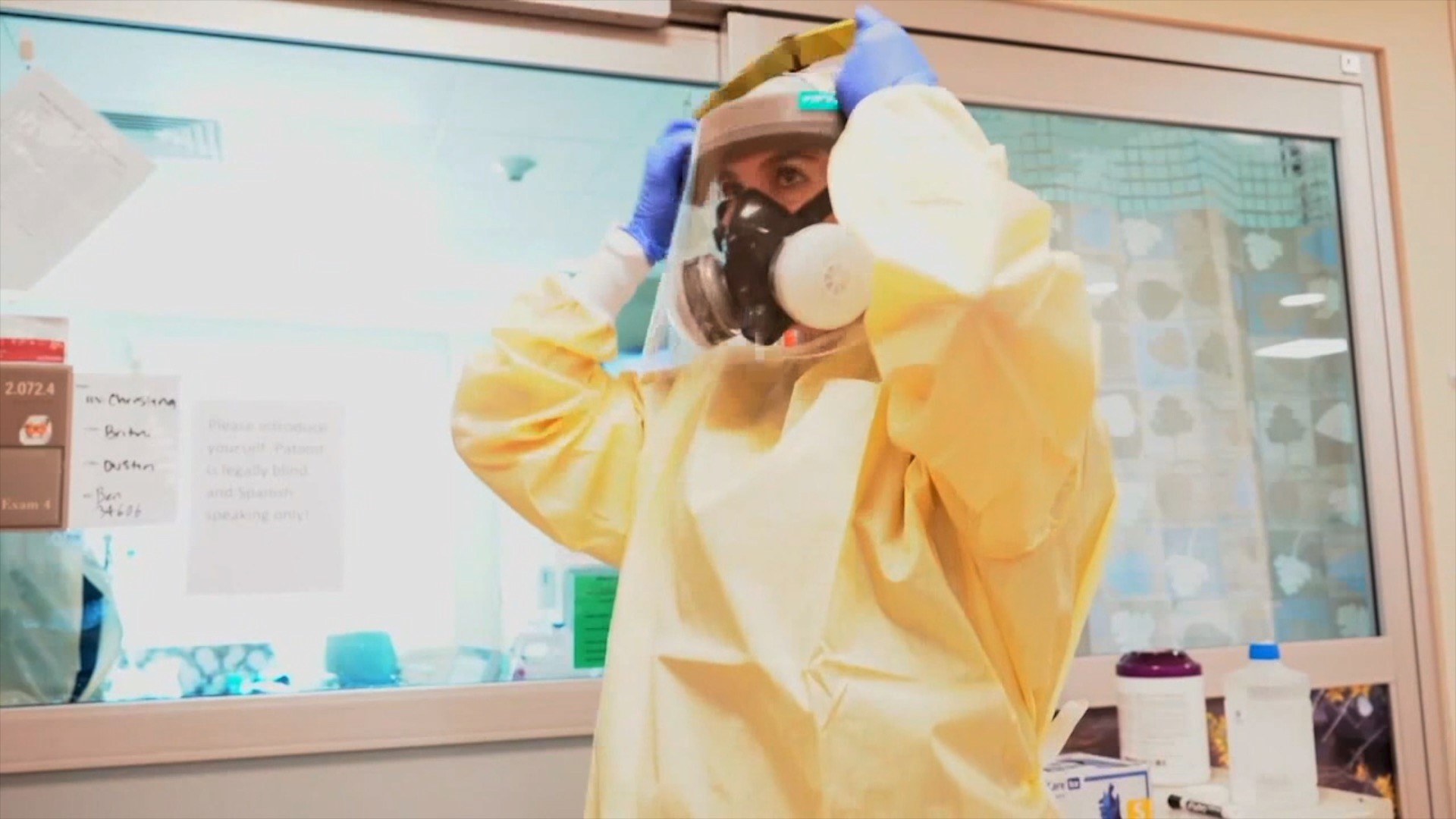HARRISBURG, Pa. — Hospitals are dealing with critical staffing shortages at a time when patients are sicker and beds are filling up. Frontline nurses are leaving the bedside in record numbers, but COVID-19 did not cause the problem—it exposed it.
Jennifer Partyka has been a nurse in Pennsylvania for 27 years. The two-year pandemic has tested her patience and she admitted that she often thinks about leaving the profession, as so many of her colleagues have. Ongoing staffing shortages have made it difficult for hospitals to maintain low patient-to-nurse ratios and it has pushed healthcare workers to a breaking point.
“With limited resources, what are you going to do? You can’t turn patients away. You have to take care of patients who come in and who’s going to take care of them?” Partyka said. “We’re being stretched, especially in areas like the ICU and the ER where there’s not a lot of control.”
Many nurses, like Partyka, believe safe patient-to-nurse ratios will attract nurses back into acute care settings. One medical study found that if you’re in the hospital, your chances of dying go up seven percent for every additional patient your nurse cares for.
Pennsylvania has a bill pending that would limit the number of patients for each nurse. The consensus among hospital industry leaders is that the proposal is not practical—especially given the workforce shortage.
“We’re just not in favor of a one-size fits all mandate for nurse staffing ratios. It’s also important to understand as well that every situation, every hospital, is different and care is delivered not just by nurses, but by a care team,” said Jeffrey Bechtel, Senior Vice President of Health Economics and Policy for the Hospital and Healthsystem Association of Pennsylvania (HAP), which represents more than 240 hospitals and health systems across the state.
Though the number of new nursing licenses issued in Pennsylvania rose by 11 percent between 2020 and 2021, thousands of nurses may have stopped working in the Commonwealth. The Department of State reports that there are 335,371 licensed nurses in Pennsylvania.
FOX43 Reveals that 192,530 licensed nurses are actively working in the state, according to the most recent Occupational Employment data from 2020. This number includes registered nurses, nurse anesthetists, nurse midwives, nurse practitioners, licensed practical and licensed vocational nurses.
Members of the Pennsylvania State Nurses Association (PSNA) said nursing shortages at hospitals have persisted for decades and stress of the pandemic has only made it worse. Nurses are quitting in droves at a time when baby boomers are retiring, leading to severe shortages at hospitals and nursing school programs.
“We’ve had to turn away as much as 80,000 qualified nursing students [nationally] because we haven’t had the faculty to be able to teach them,” said Betsy Snook, CEO of the PSNA. “In some places, up to 20 percent of their nursing population are leaving. Most of that’s from burnout and being exhausted and tired. And even if given the option of more money, they’re just exhausted. They’ve just have had it.”
Hospitals cannot replace staff fast enough. FOX43 Reveals that turnover rates for nurses have spiked since 2019. According to a HAP workforce survey, their member hospitals reported an average 27 percent vacancy rate for staff registered nurses (RN) providing direct patient care and a 45.5 percent vacancy rate for nursing support professionals (CNA, PCA, NA).
HAP used data collected from the survey to evaluate members’ current health care workforce issues around recruitment and retention and improve access to care.
“Hospitals are taking extraordinary steps to meet the needs of patients. As part of the survey, some of the strategies include sign-on bonuses for new employees, retention bonuses,” explained Bechtel. “In many cases, they’re offering tuition reimbursement or continuing education, flexible scheduling, so that’s really the focus of the hospital community.”
If these workforce shortage trends hold, a 2021 study on the U.S. healthcare labor market projects Pennsylvania will be short nearly 300,000 healthcare workers by 2026, including more than 20,000 nurses.
The nursing community said it is time they have a seat at the table. They want the state to establish a Chief Nursing Officer (CNO) of the Commonwealth to give them a voice during public health crises. The position would be modeled after the role of the Physician General.
Duties of the CNO would include advising the Governor and Secretary of Health, participating in the Department of Health’s decision-making process on policies related to nursing and public health issues, and serving as a voting member of the State Board of Nursing.
“I really feel that nursing leadership is the thing that we have missed during the past two years,” said Partyka. “We are the ones who understand what’s happening on the front lines. We are the ones 24/7 at the patient’s bedside. We are the most credible sources when it comes to what is needed at the bedside.”
FOX43 Reveals issues that affect you and your family to keep you informed. If you have at topic you want us to investigate, send us an email at FOX43reveals@FOX43.com.

